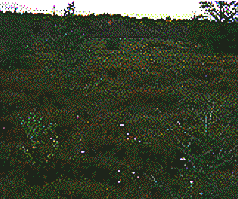
- MER BLEUE: Gloucester Ontario
A huge wetland of 5000 hectares (12,500 acres) over
poorly drained clay soil.
You can imagine that you are standing in the peatlands on the edges of Hudson
Bay. Mer Bleue (blue sea) was formed in a
glacial drainage channel. Sandbars
remain in the area as islands and ridges. Spotted with Black Spruce and Tamarack.
Formed over clay soil.
Sandhill cranes have bred here.
Designated as a wetland of international importance (RAMSAR SITE)
- Spruce Bog Boardwalk Trail in ALGONQUIN PARK: Ontario
- Caribou Plain Trail (raised bog) in Fundy National Park
- Bog trail at Esker in La Mauricie National Park
- Bog trail in Cape Breton Highlands National Park
- Kellys Bog in Kouchibouguac National Park in Nova Scotia
- Alfred Bog: Alfred Ontario
A bog at risk. Some parts are now protected, but large portions have been "reclaimed". This is part of the same ancient channel of the Ottawa River which contains Mer Bleue. Moose can be found here and in the neighbouring Larose Forest.
![[home]](gsbann.gif)